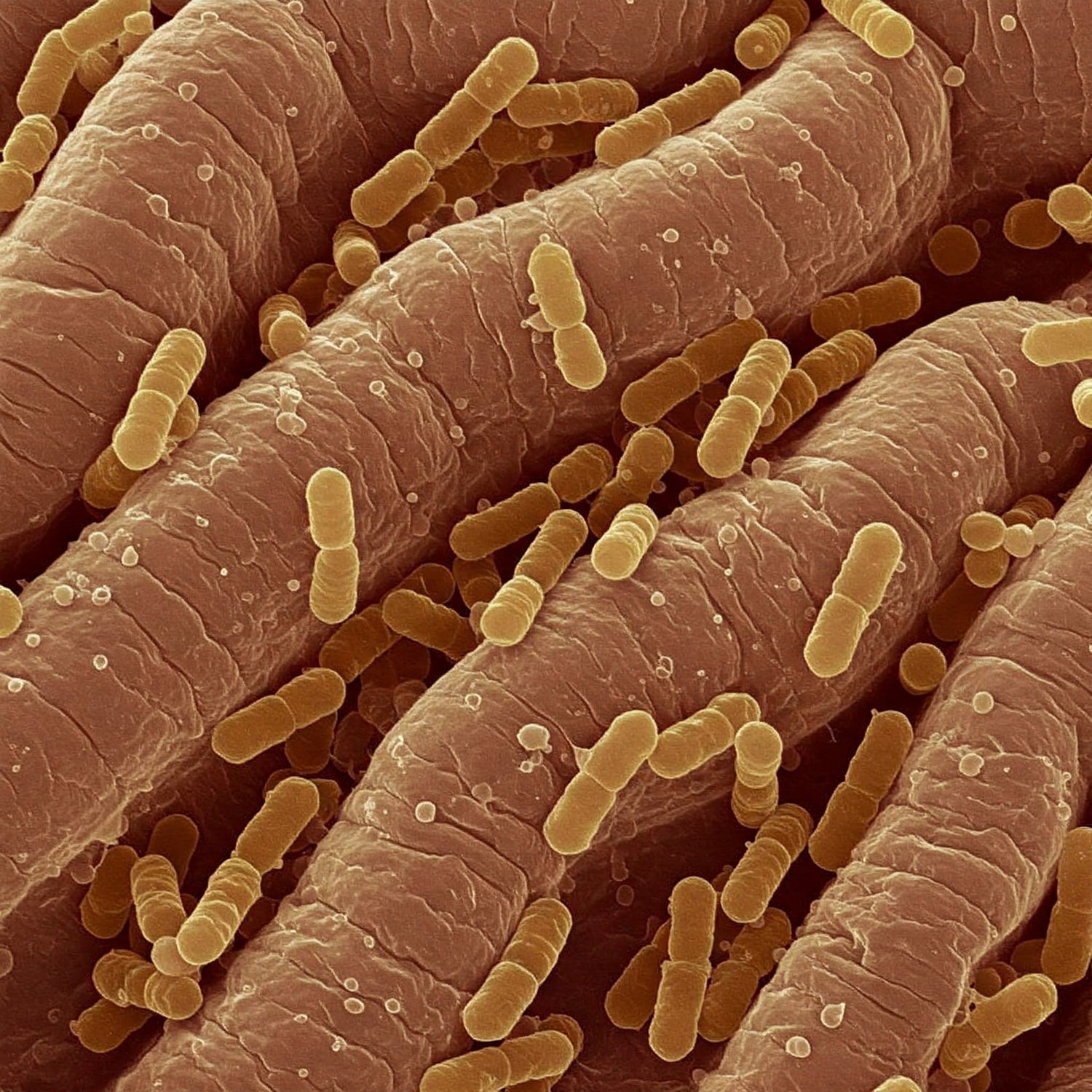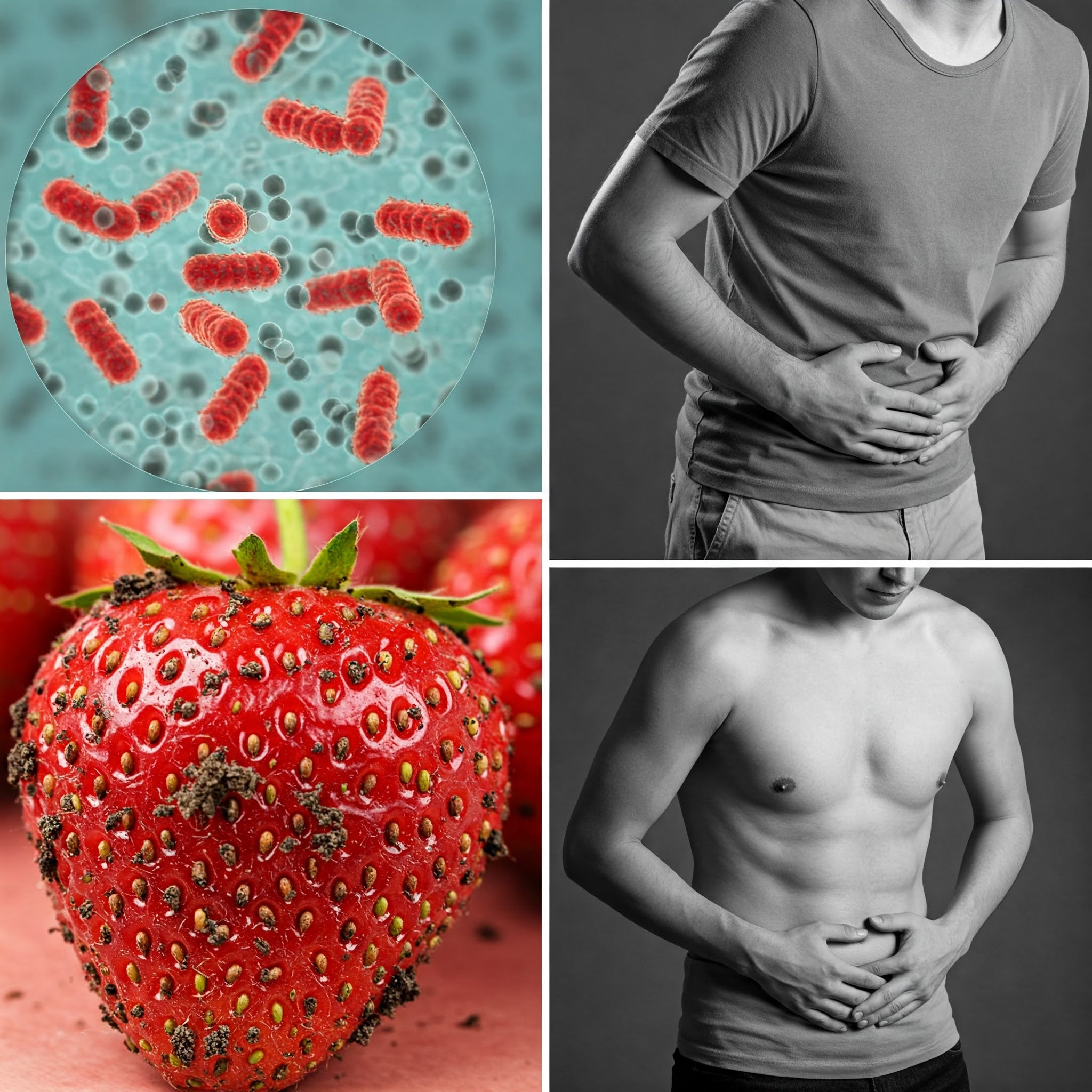Escherichia coli infection can cause problems if harmful strains of E. coli in the colon are present, although E. Coli in the colon helps with digestion. This article covers the roles of E. Coli, how it benefits us, the risks it poses, and ways to manage infections.
Key Takeaways
-
Escherichia coli (E. Coli) has both beneficial non-pathogenic strains that support digestion and health, and harmful pathogenic strains that can cause serious infections.
-
Pathogenic E. Coli strains, such as O157:H7, pose significant health risks and are primarily transmitted through contaminated food, water, and poor hygiene practices.
-
Effective prevention of E. Coli contamination is achievable through proper food safety practices, and the use of advanced technologies like the Milerd Detoxer can significantly reduce risks associated with pathogenic bacteria. Health organizations, such as the Centers for Disease Control and Prevention (CDC), provide guidelines and resources for effective disease control to prevent E. coli outbreaks.
Understanding E. Coli in the Colon

Commonly referred to as E. coli, Escherichia coli is a bacterium typically found in the intestines of both animals and humans where it remains harmless, aiding in breaking down food components that are otherwise indigestible and facilitating the absorption of nutrients. Although most variants of E. coli are benign, some can trigger serious intestinal diseases.
The genetic makeup separates harmful strains of E. Coli from their harmless counterparts. Pathogenic types possess extra genes not found in non-pathogenic ones, which give them the capability to produce disease-inducing toxins, penetrate cells within the intestine and resist attacks by the immune system—attributes that render them particularly perilous. Understanding these distinctions plays a crucial role in managing infections caused by E. Coli effectively.
Harmful strains of E. coli can enter the colon through various means, including eating contaminated food, particularly undercooked meat or contaminated produce.
Inhabiting the colon, different strains demonstrate contrasting effects: while those without disease-causing traits support maintaining health within our digestive tract through beneficial activities such as digestion aid and nutrient absorption enhancement. Others present significant threats to our well-being due to their pathological potential—a fact which highlights how critical it is for us to differentiate between helpful and harmful varieties so we may leverage advantageous aspects while averting detrimental outcomes associated with certain forms of this bacteria.
Definition of Escherichia coli
Escherichia coli, commonly known as E. coli, is a type of bacteria that naturally resides in the intestines of humans and animals. While most strains of E. coli are harmless and play a beneficial role in digestion, some can cause severe illnesses. These harmful strains are responsible for conditions such as urinary tract infections, diarrhea, and even pneumonia. E. coli is a gram-negative, rod-shaped bacterium, typically measuring about 2.0 micrometers in length and 0.25-1.0 micrometers in diameter. Understanding the dual nature of E. coli is crucial for recognizing its role in both health and disease.
Types of E. coli
E. coli encompasses several types, each with unique characteristics and effects on the human body. Here are some of the most common types:
-
Enterotoxigenic E. coli (ETEC): Often found in contaminated food and water, ETEC is a leading cause of watery diarrhea, particularly in travelers.
-
Enteropathogenic E. coli (EPEC): This type is typically associated with contaminated food and water and can cause diarrhea, especially in young children.
-
Enteroinvasive E. coli (EIEC): Similar to Shigella bacteria, EIEC can lead to diarrhea and dysentery, characterized by severe abdominal cramps and bloody stools.
-
Enterohemorrhagic E. coli (EHEC): Also known as Shiga toxin-producing E. coli (STEC), this type can cause severe bloody diarrhea and potentially life-threatening kidney failure.
-
Enteroaggregative E. coli (EAEC): Commonly found in contaminated food and water, EAEC can cause persistent diarrhea, which can be particularly troublesome for children and immunocompromised individuals.
Understanding these types helps in identifying the source and potential severity of E. coli infections, emphasizing the importance of food safety and hygiene.
Beneficial Roles of E. Coli in Gut Health
Beneficial strains of E. coli play a pivotal role in maintaining gut health by assisting in the breakdown of complex carbohydrates and substances that are otherwise indigestible. This action enhances nutrient absorption, establishing their essential function within the microbial community of the digestive tract and contributing to an equilibrium within our internal biomes.
These strains of E. Coli are responsible for synthesizing crucial vitamins necessary for human health, including vitamin K and certain B vitamins imperative for processes such as blood coagulation and energy generation. They thrive amidst oxygen-rich environments, which not only allows them to prosper, but also facilitates the proliferation of other advantageous gut microbes — fostering a mutually beneficial environment conducive to well-being.
The existence of non-pathogenic E. Coli strains serves as a formidable defense against harmful bacteria by occupying spaces along the intestinal walls where pathogens might otherwise establish themselves, thereby preventing potential infections from taking hold. This defensive mechanism highlights why sustaining a balanced composition of our gut microbiome with these harmless strains is vital for preserving optimal digestive system functionality.
Pathogenic E. Coli: Causes, Risk Factors, and Urinary Tract Infections

While the majority of E. Coli strains are not harmful, there are certain types that can lead to significant health issues. The strain known as E. Coli O157:H7 is notorious for causing intense gastrointestinal distress. This strain, along with others, manufactures shiga toxin which can cause serious harm to the lining of the intestines resulting in bloody diarrhea and additional adverse effects.
Infections from pathogenic E. Coli may result from ingesting even minimal amounts of contaminated food or water sources. Typical pathways for transmission include fecal-oral contact, consumption of undercooked meat products, and exposure to tainted water supplies. These bacteria have the capability to propagate through interaction with persons harboring infection or surfaces carrying pathogens. Underscoring sanitation measures’ critical role.
Certain populations face a heightened susceptibility to infections by pathogenic E. Coli, such as young children under five years old, elderly individuals over sixty-five years old, and those whose immune systems are compromised. Awareness regarding causal agents and contributory elements associated with these dangerous strains is vital in devising efficacious preventative actions alongside therapeutic interventions thereby diminishing occurrences of potentially fatal illnesses caused by this bacterium.
Symptoms of E. Coli Infections in the Colon
Infections stemming from E. coli may present a spectrum of signs ranging from slight unease to acute sickness. Notable symptoms include:
-
Persistent watery diarrhea
-
Pain in the abdomen
-
Feelings of nausea
-
Episodes of vomiting
-
Infection by Escherichia coli
Certain strains, such as E. coli O157:H7, are known to cause intense abdominal cramping and diarrhea that is initially watery but might progress to blood-stained stools – a sign indicative of considerable harm within the intestines.
Symptomatic onset usually takes place 3 to 5 days post-exposure to the pathogen. Early detection of these indicators is crucial for prompt medical intervention. Prolonged infections can evolve into relentless diarrhea and grave conditions like hemolytic uremic syndrome, with potential consequences including renal failure among other critical health issues.
Awareness about symptomatology and its trajectory contributes substantially towards swift identification and proper management of Escherichia coli infections, which plays a significant role in diminishing risk factors linked with severe illness thereby promoting more favorable patient outcomes for those affected.
Complications of E. Coli Infections
E. coli infections can lead to several serious complications, including:
-
Hemolytic uremic syndrome (HUS): A severe condition that can result in kidney failure, particularly in infections caused by EHEC/STEC strains.
-
Chronic diarrhea: Some individuals may experience persistent diarrhea lasting for weeks or even months, significantly impacting their quality of life.
-
Kidney damage: E. coli infections can cause lasting damage to the kidneys, potentially leading to chronic kidney disease or kidney failure.
-
Neurological complications: In rare cases, E. coli infections can lead to neurological issues such as meningitis or encephalitis, posing significant health risks.
Recognizing these potential complications underscores the importance of early detection and appropriate treatment of E. coli infections.
How E. Coli Spreads and Contaminates Food

Food and water safety is crucial to prevent E. coli infection since it often contaminates food sources such as undercooked beef, raw fruits and vegetables, raw cookie dough, and unpasteurized milk. Eating contaminated food, such as undercooked beef or contaminated produce, is one of the most common sources of E. coli infections. The use of contaminated water for irrigation or cleansing can introduce E. coli into various food products, presenting a substantial hazard.
Lapses in personal hygiene like neglecting handwashing after restroom usage greatly contribute to the spread of E. coli. When kitchen tools used on raw meat are reused without being adequately sanitized for other foods during meal prep work, it could facilitate cross-contamination with this bacteria.
The risk of spreading E.coli increases through direct interaction with animals harboring the infection. They may subsequently contaminate both edible goods and surfaces alike. Recognizing these pathways that lead to transmission plays an instrumental role in promoting preventive actions such as thoroughly cooking foods, consistent hand sanitation practices, along with avoiding any form of cross-contamination—measures essential for diminishing potential encounters with an E.coli infection.
Is E. coli Contagious?
Yes, E. coli is indeed contagious. The bacteria can spread through various means, including:
-
Contaminated food and water: Consuming food or water tainted with E. coli can lead to infection.
-
Person-to-person contact: Direct contact with an infected person can facilitate the spread of E. coli.
-
Contaminated surfaces and objects: Touching surfaces or objects contaminated with E. coli and then touching your mouth or face can result in infection.
-
Animals: Animals, particularly those carrying E. coli in their intestines, can contaminate food and surfaces, leading to human infections.
Practicing good hygiene, such as frequent handwashing, is essential to prevent the spread of E. coli.
Diagnosis and Evaluation of E. Coli Infections and Shiga Toxin
Laboratory examination of fecal specimens is essential in identifying E. coli infections by confirming the existence of E. coli bacteria and particular toxins they may produce. To ascertain the presence and type of E. coli, cultivation techniques are utilized, which is a critical process for distinguishing between harmful strains such as E. Coli O157:H7 and harmless variants due to its unique pathogenic traits.
To detect an E. Coli infection, medical professionals might analyze not only stool samples but also potentially contaminated materials like urine, blood, or body tissues using advanced molecular methods including PCR (Polymerase Chain Reaction). These sophisticated diagnostic tools aid in pinpointing specific pathogens swiftly and accurately, thus enabling timely treatment interventions.
In cases where severe illness occurs due to strain O157:H7 of the bacteria being identified with certainty through testing procedures—it becomes imperative to conduct ongoing monitoring via blood tests—which plays a crucial role in averting complications such as hemolytic uremic syndrome (HUS) that can arise from these bacterial infections—thus promoting more effective control over infection progression while helping reduce the adverse effects associated with e.coli-related diseases through accurate diagnosis and assessment practices leading up to appropriate care management strategies.
Treatment Options for E. Coli Infections
Treating E. Coli infections effectively starts with assessing illness severity and potential dehydration. Hydration is critical, especially for those affected by E. Coli O157:H7, which can cause severe dehydration. Precautions should be taken to prevent this. For patients unable to consume oral fluids, intravenous hydration is advised.
In severe cases, antibiotics may be required, though they are not the first choice for mild E. Coli-related diarrhea due to potential side effects and antibiotic resistance. Rifaximin, azithromycin, and ciprofloxacin are recommended for severe illnesses. Antibiotics are generally not recommended for those suspected of having EHEC/STEC. This caution arises from the increased risk of hemolytic uremic syndrome.
Antimotility agents like bismuth-subsalicylate and loperamide help manage distressing symptoms. These medications offer relief for gastrointestinal issues. These agents alleviate symptoms, providing relief for those suffering from traveler’s diarrhea caused by E. Coli. Proper treatment leads to better health outcomes and faster recovery for those affected by E. Coli infections.
Preventing E. Coli Contamination

To mitigate the risks of E. coli contamination, adhering to a set of essential practices is critical. The four-step strategy known as ‘clean, separate, cook, and chill’ offers guidance for preserving food safety and minimizing E. Coli dangers by highlighting the importance of:
-
Maintaining cleanliness
-
Preventing cross-contamination
-
Cooking foods to their correct internal temperatures
-
Prompt refrigeration of uneaten food
In the U.S., advancements in meat processing techniques have been instrumental in diminishing the likelihood of contamination from meat products. Diligent handwashing with soap and water plays a vital role in thwarting infections caused by E.coli bacteria. It’s equally important to steer clear of unprocessed water while engaging in outdoor activities or during travel.
The deployment of Milerd Detoxer can greatly enhance overall food safety measures due to its capacity to eradicate up to 99% hazardous agents found on vegetables among other foods – thanks primarily to its ultrasonic technology that penetrates beyond surface levels achievable through standard washing procedures—thereby providing exceptionally deep cleaning results. Integrating such preventative solutions considerably lessens potential encounters with E.Coli contaminants.
Role of Detoxer in Reducing E. Coli Risks
The Milerd Detoxer is engineered to purify and sanitize an array of food items, including but not limited to fruits, vegetables, grains, meats, and seafood. It employs the natural oxidizing properties of ozone to disrupt the cellular structure of bacteria and deactivate pathogens. By doing so, it plays a critical role in promoting safer consumption by efficiently cleansing food products of dangerous substances.
Equipped with ultrasonic technology, the Milerd Detoxer generates minute bubbles that can detach dirt particles and microorganisms from the surfaces of foods. This method is proficient at clearing away not just visible impurities, but also ridding foodstuffs of microbes such as bacteria and viruses, pesticides, toxic metals, mold spores, and eggs from parasites. Utilization of this detoxifying machine substantially lessens the chances for contracting illnesses associated with E.coli along with other infections transmitted through contaminated sustenance.
By harnessing both potent ozone treatment coupled with ultrasound technology advances in its operations, this device excels at extracting residues left by pesticides or heavy metals as well as eradicating various undesirable elements like mold contaminants. Circumventing potential health adversities stemming from ingesting tainted edibles. Adopting regular use of The Milerd Detoxer into your regimen concerning meal safety could lead to improved well-being due to increased protection against eating polluted nourishment.
Returning to Normal Activities
After recovering from an E. coli infection, it is crucial to take steps to prevent the spread of the bacteria and safely return to normal activities. Here are some guidelines:
-
Practice good hygiene: Wash your hands frequently with soap and water, especially after using the restroom and before eating.
-
Avoid close contact: Stay away from individuals with weakened immune systems until you are fully recovered.
-
Do not share food, drinks, or utensils: This helps prevent the spread of bacteria.
-
Cook meat thoroughly: Ensure meat is cooked to an internal temperature of at least 63°C (145°F) to kill any harmful bacteria.
-
Avoid cross-contamination: Use separate cutting boards and utensils for raw meat and other foods, and clean them thoroughly after use.
Consult with your healthcare provider before returning to work or school, especially if you work in healthcare or handle food, to ensure you are no longer contagious and can safely resume your activities.
Summary
In summary, it is essential to grasp the complex character of E. Coli as it pertains to supporting digestive health and averting serious illnesses. The harmless varieties of E. Coli contribute positively by aiding in digestion and the uptake of nutrients, while their harmful counterparts can lead to significant medical concerns. Awareness about the signs of E. Coli infections and measures for avoiding contamination are critical for improved health results.
Prompt detection and appropriate treatment are fundamental in managing infections caused by E. Coli effectively. Utilizing lab tests and ongoing supervision aids in pinpointing these infections early on, which helps prevent Issues from developing. With treatments that may include rehydration solutions or antibiotics for more severe instances at our disposal, individuals impacted can return to good health both rapidly and with safety considerations intact.

Utilization of tools like the Milerd Detoxer is instrumental when looking to diminish the risks associated with E.coli because this appliance detoxifies edibles thus disinfecting them thoroughly before consumption - removing not just pathogenic bacteria but also pesticides, heavy metals, among other detrimental substances present within foods. Ultimately, enhancing overall food safety along with its nutritional value greatly benefits those who use such preventive strategies paired alongside such preventive strategies. The detoxer itself thereby collectively shielding oneself and near ones against afflictions related directly back towards various types under category known simply as ‘E coli’; culminating in a healthier existence altogether through these concerted efforts practiced regularly without fail.



Leave a comment
This site is protected by hCaptcha and the hCaptcha Privacy Policy and Terms of Service apply.